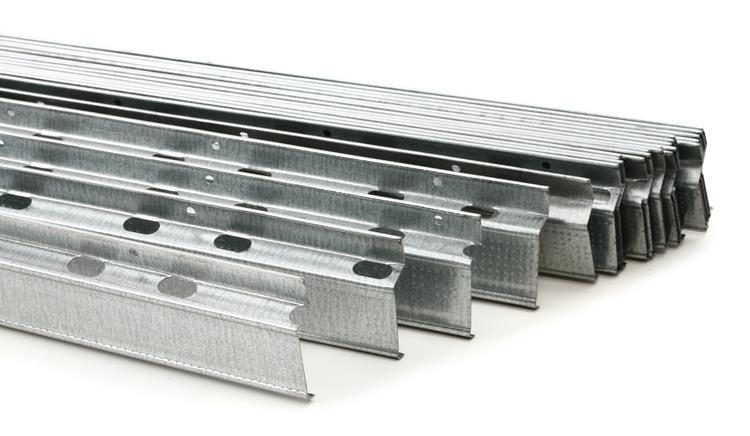It is a question why we still use resilient channels within construction today considering the long list of risk factors that pertains to the name. Resilient channel was brought into building assemblies in the 1960’s as a less expensive way to mechanically isolate the drywall from the studs. Though it is seen by many as the cheapest way to quickly sound proof an assembly, unfortunately due to an endless list of risk factors and problems it isn’t.
Most professional soundproofing companies, like Hush City soundproofing would tell you it’s much better to use Hush isolation sound clips and Drywall Furring Channel. For a low cost solution you can soundproof a wall or ceiling with these steel clips & channel that would put any resilient channel system to shame. Below is a list of the most common risk factors that one should consider before starting a project:
Resilient Channel is frequently drawn on the plans upside down and/or installed upside down in an assembly. When installing resilient channel it is important that the leg or mounting flange be installed down which helps to pull the channel away from the wall. When the mounting flange of the resilient channel is installed on the top, the total weight of the drywall ends up pushing the channel into the framing members thus creating a short circuit in the wall assembly, which results in a lower STC rating.
The first single leg resilient channel that gives us most lab test results actually no longer exists. In 1985 the U.S. Gypsum Corporation (USGC) stopped manufacturing the resilient channel that makes up most of the lab test results today that we see. Most of these results are based on sound tests conducted over 10 years ago on diverse assemblies. Because there isn’t a benchmark for manufacturing resilient channel and it is a product that is not specified by the Steel Stud Manufacturers Association (SSMA), the vast range resilient channels in the market differ significantly in their resilient (rigidity) attributes. Resilient channel that is excessively rigid, or have holes with the incorrect dimensions or profiles, have the consequences of decreased STC ratings.
A fastener is placed inaccurately or the wrong sized fastener is used. If a fastener unintentionally makes contact with a framing member at the time of the installation of the drywall to the resilient channel, it will create a short circuited assembly and will essentially create a poorly sound insulated assembly. Typically when attaching drywall to the resilient channels the assembly is designed to use 1-inch screws, but often installers use longer drywall screws because of ease of installation and to save time. This is the undoing, and essentially what short circuits the resilient channel assembly. The longer screws usually are long enough to pass through the drywall, through the resilient channel and into the framing member. This is why the width between the drywall and the stud has to be correct with a decoupling product. It can’t be too thick or you will lose square footage, and it can’t be too thin or else you may short circuit the assembly, like the furring channel mentioned above. sound isolation clips with 7/8” furring channel are the perfect option for sound proofing your walls or ceilings. The sound isolation clips are thick enough to provide the safe guard of short circuiting and screwing through the drywall to the stud, but thin enough to save square footage within the room.
For more soundproofing tips and blogs visit our blog section of or website here.
Share blog:





